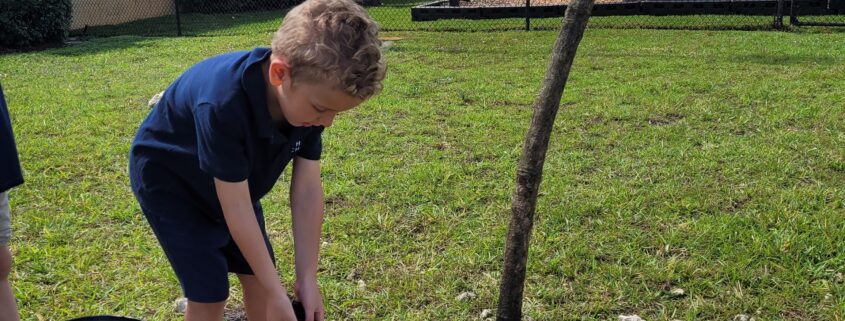Teaching Children About Earth Day Through Agronomy
“Forests are the lungs of our land, purifying the air and giving fresh strength to our people.”
Every year in April on the 22nd, people from around the world come together to celebrate an event that has become known as Earth Day. Since its inception over 50 years ago, Earth Day has served as a reminder that each individual has a role to play in creating a healthier and more sustainable world.
Whether it’s through reducing waste, conserving energy, or supporting environmentally-friendly policies, Earth Day encourages us to take action and positively impact the environment. It’s a reminder that we all have a role to play in preserving the health of our planet and that even small actions can have a significant impact.
Teaching Children About Earth Day
Children are the future caretakers of the earth, and educating them about environmental conservation will create a ripple effect of positive change. By teaching children about Earth Day, we can raise awareness of environmental issues, encourage responsible behavior toward our planet, and inspire future generations to impact the world positively.
By learning about Earth Day, children can also understand the importance of reducing their carbon footprint, conserving natural resources, and protecting the environment to benefit all living things.
What Agronomy Teaches Children
By teaching children about agronomy, we can impart valuable knowledge about how plants grow, the importance of soil health, and the role of agriculture in protecting the environment.
Agronomy also teaches children the importance of sustainable farming practices, including crop rotation, cover cropping, and natural pest control. These lessons can inspire children to take an active interest in environmental stewardship and motivate them to make positive changes in their own communities.
Agronomy encompasses many STEM subjects, including biology, chemistry, and physics. Through agronomy, children can learn about plant life cycles, soil composition, and the role of nutrients in plant growth. They can also develop essential skills such as data analysis, critical thinking, and problem-solving. By incorporating agronomy into Earth Day lessons, educators can provide children with a comprehensive understanding of how they can contribute to a healthier planet.
How can you teach children about Earth Day?
- Make Earth Day Interactive: Children learn best when actively engaged in the learning process. Plan interactive activities such as planting trees, creating a compost bin, or building birdhouses to teach them about environmental awareness and responsibility.
- Introduce Earth Day Through STEM Education: Earth Day is the perfect opportunity to introduce your children to the wonders of science, technology, engineering, and math (STEM). Through STEM education, they can learn about our planet’s environmental challenges and how to help solve them.
- Read Books About Earth Day: Reading books with your children about the history and significance of this day can be a great way to teach them about the importance of caring for the planet.
- Encourage Outdoor Play Throughout the Year: Spending time outdoors can help children appreciate the natural world and learn about the interconnectedness of all living things. Encourage outdoor play and exploration to foster a love for nature and promote environmental stewardship.
At Beth Emet School, as a blend of our dedication to STEM education and environmental awareness, students participate in an agricultural science class where they have the opportunity to study by theory and in practice the following: local climate patterns, principles of organic planting, growing and harvesting (both traditional and hydroponic), scientific experimentation, water conservation and tasting the fruits of one’s own labors.




